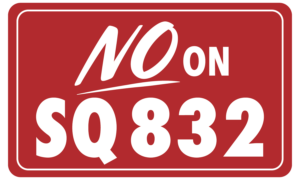 State Question 832 (SQ 832) seeks to amend the Oklahoma Minimum Wage Act in Oklahoma Statutes by untying the state from the federal minimum wage. The question will appear before voters on the June 2026 primary ballot, and if approved, it would increase Oklahoma’s state mandated minimum wage beginning in 2025 to $9 per hour and continue with annual wage increases until 2029. Beginning in 2030, the wage will increase with the cost of living, as measured by the U.S. Department of Labor’s Consumer Price Index.
State Question 832 (SQ 832) seeks to amend the Oklahoma Minimum Wage Act in Oklahoma Statutes by untying the state from the federal minimum wage. The question will appear before voters on the June 2026 primary ballot, and if approved, it would increase Oklahoma’s state mandated minimum wage beginning in 2025 to $9 per hour and continue with annual wage increases until 2029. Beginning in 2030, the wage will increase with the cost of living, as measured by the U.S. Department of Labor’s Consumer Price Index.
On November 20, 2023, The State Chamber and Oklahoma Farm Bureau filed a challenge in the Oklahoma Supreme Court against proposed State Question 832. “State Chamber member companies have no interest in artificially holding down wages, and in today’s labor market, they could not stay in business if they tried to do so,” said Chad Warmington, president and CEO of The State Chamber. “Let’s be clear, most of our members already pay well above the current minimum wage hourly rate to their non-salaried employees. What is a major concern to us is the automatic, open-ended increase being linked to a federal government produced index that is based upon cost-of-living rates in cities like New York or San Francisco. Those areas are not reflective of the actual cost of living in Oklahoma.
To illustrate the spiral SQ 832’s Inflation Escalator could impose on Oklahoma families and businesses, the following projections are helpful. Within a decade and a half of taking effect, the Inflation Escalator in SQ 832 would take the government-mandated wage from today’s $7.25 per hour to:
- $22.16 per hour, if CPI-W grows at the 10-year average;
- $27.56 per hour, if CPI-W grows at the 5-year average; and
- $35.61 per hour, if CPI-W grows at the 3-year average.
While on the surface, this may seem beneficial for low-wage workers, the collaborative effort between The State Chamber of Oklahoma and Oklahoma Farm Bureau seeks to address the complexities and adverse effects on various sectors of the state’s economy. Study after study has demonstrated that when a state or city hikes its minimum wage, the result is fewer employment opportunities, higher costs for consumers, increased business failures, or some combination of those three signs of economic destruction. Worse, those economic effects are typically borne by the very people advocates claim they are trying to help—low-income workers.
